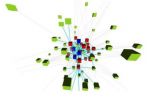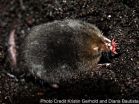(Press-News.org) BOSTON – January 31, 2013 – Joslin scientists report the first generation of human induced pluripotent stem cells from patients with an uncommon form of diabetes, maturity onset diabetes of the young (MODY). These cells offer a powerful resource for studying the role of genetic factors in the development of MODY and testing potential treatments. The findings appear in the Journal of Biological Chemistry.
Human induced pluripotent stem cells (hiPSCs) are adult cells that have been genetically reprogrammed to exhibit the characteristics of embryonic stem cells, including the ability to differentiate into specialized cell types. The generation of hiPSCs, which was first reported in 2006, was a major scientific breakthrough with the potential to increase understanding of many diseases and aid in drug development.
Maturity onset diabetes of the young (MODY) is a form of diabetes that mainly affects individuals age 25 or younger and accounts for about 1 to 5 percent of all diabetes cases in the United States. Unlike type 1 and type 2 diabetes, which are polygenic and result from alterations in genetic and environmental factors, MODY is a monogenic disease that results from mutations in a single gene. To date, eight types of MODY and eleven MODY genes have been identified. Some types of MODY produce only mild symptoms and are often treated solely with oral diabetic medications.
Joslin Diabetes Center is one of a limited number of research institutes with the capability to generate hiPSCs from patients with diabetes. The cells used to produce the hiPSCs were obtained from patients with five different types of MODY at Joslin Diabetes Center and Haukeland University Hospital, Bergen, Norway. The MODY-hiPSCs are morphologically, molecularly and functionally indistinguishable from human pluripotent stem cells (hPSCs).
As a monogenic disease, MODY provides "a valuable opportunity to directly study in more detail the genetic mechanisms underlying the disease and not be influenced by other factors, such as insulin resistance," says senior author Rohit N. Kulkarni, M.D., Ph.D., a Principal Investigator in the Section on Islet Cell and Regenerative Biology at Joslin and Associate Professor of Medicine at Harvard Medical School.
The scientists will first induce the MODY-hiPSCs to differentiate towards beta cells and in the process learn more about the potential blocks in their ability to differentiate. Using the iPSC-derived beta cells, they plan to study how MODY genes regulate the insulin secretory function. "Generating hiPSCs is an important step forward because we cannot obtain beta cells from living patients. These cells will allow us to do many experiments that otherwise would not be possible," says Dr. Kulkarni.
The scientists also plan to explore ways to correct the genetic defect and use the beta cells derived from the "repaired" hiPSCs to test various treatments. "If we find medications that improve beta cell function, we can go back to the clinic and use them to treat patients," says Dr. Kulkarni. "It will allow us to tailor treatments to a patient's unique characteristics and provide personalized medicine to diabetes patients."
INFORMATION:
This study was funded by grants from the Harvard Stem Cell Institute and the National Institutes of Health.
Joslin scientists find first human iPSC from patients with maturity onset diabetes of the young
Opens new possibilities for studying diabetes and testing treatments
2013-01-31
ELSE PRESS RELEASES FROM THIS DATE:
Personalized medicine eliminates need for drug in 2 children
2013-01-31
This press release is available in French.Using genome-wide analysis, investigators at the Sainte-Justine University Hospital Research Center and the University of Montreal have potentially eliminated a lifetime drug prescription that two children with a previously unknown type of adrenal insufficiency had been receiving for 14 years. Over a lifespan, the adjustment in treatment represents an approximate saving of $10,000 in drug and test costs per patient. Moreover, the less invasive treatment regime can potentially reduce the lifetime risk of hypertension in the patients. ...
Nanomaterials key to developing stronger artificial hearts
2013-01-31
On January 30, 2013 ACS Nano published a study by Ali Khademhosseini, PhD, MASc, Brigham and Women's Hospital Division of Biomedical Engineering, detailing the creation of innovative cardiac patches that utilize nanotechnology to enhance the conductivity of materials to induce cardiac tissue formation. Creation of these ultra-thin cardiac patches put medicine a step closer to durable, high-functioning artificial tissues that could be used to repair damaged hearts and other organs.
The cardiac tissue patches utilize a hydrogel scaffolding reinforced by nanomaterials called ...
Pediatric orthopaedic surgeons show age-related patterns of spine injury in ATV injuries
2013-01-31
Memphis, Tenn. – Children continue to account for a disproportionate percentage of morbidity and mortality from ATV-related accidents – up 240 percent since 1997, according to a Journal of Pediatric Orthopaedics report published by pediatric orthopaedic surgeons at Le Bonheur Children's Hospital.
The surgeons – who studied data from the Kids' Inpatient Database – found spine-related injuries from all-terrain vehicles (ATVs) in the United States are more common in older children and in females, unlike males in most trauma studies. ATV-related spine injuries in children ...
Researcher uncovers potential cause, biomarker for autism and proposes study to investigate theory
2013-01-31
NEW YORK, NY — A New York-based physician-researcher from Touro College of Osteopathic Medicine, best known for his research into fertility and twinning, has uncovered a potential connection between autism and a specific growth protein that could eventually be used as a way to predict an infant's propensity to later develop the disease. The protein, called insulin-like growth factor (IGF), is especially involved in the normal growth and development of babies' brain cells. Based on findings of prior published studies, Touro researcher Gary Steinman, MD, PhD, proposes that ...
Working alone won't get you good grades
2013-01-31
Students who work together and interact online are more likely to be successful in their college classes, according to a study published Jan. 30 in the journal Nature Scientific Reports and co-authored by Manuel Cebrian, a computer scientist at the Jacobs School of Engineering at the University of California San Diego.
Cebrian and colleagues analyzed 80,000 interactions between 290 students in a collaborative learning environment for college courses. The major finding was that a higher number of online interactions was usually an indicator of a higher score in the class. ...
Adding new members to group increases distrust among older members, impacts coordination
2013-01-31
Adding a new member to a working group can create distrust between members and hinder group functions, but a new study suggests that the distrust created is between older group members rather than about the newcomers- especially when previous group performance with just the older group members is poor. The results are part of a study published January 30 in the open access journal PLOS ONE by Matthew McCarter and Roman Sheremeta from Chapman University (U.S).
Previous studies report that changing members in an existing group hurts group performance, but the underlying ...
Leading by the nose: Star-nosed mole reveals how mammals perceive touch, pain
2013-01-31
The most sensitive patch of mammalian skin known to us isn't human but on the star-shaped tip of the star-nosed mole's snout. Researchers studying this organ have found that the star has a higher proportion of touch-sensitive nerve endings than pain receptors, according to a study published January 30 in the open access journal PLOS ONE by Diana Bautista and colleagues from the University of California, Berkeley and Vanderbilt University.
Touch and pain are closely intertwined sensations, but very little is known about how these sensations are detected in our cells. In ...
Chimp see, chimp learn: First evidence for chimps improving tool use techniques by watching others
2013-01-31
VIDEO:
This video shows the "dipping " technique performed by chimpanzee Ayumu. Note that he uses his mouth to insert the tube into the bottle. In form, his technique is identical to...
Click here for more information.
Chimps can learn more efficient ways to use a tool by watching what others do, according to research published January 30 in the open access journal PLOS ONE by Shinya Yamamoto and colleagues from Kyoto University and Kent University, UK. Their study ...
Tapeworm eggs discovered in 270 million year old fossil shark feces
2013-01-31
A cluster of tapeworm eggs discovered in 270-million-year-old fossilized shark feces suggests that intestinal parasites in vertebrates are much older than previously known, according to research published January 30 in the open access journal PLOS ONE by Paula Dentzien-Dias and colleagues from the Federal University of Rio Grande, Brazil.
Remains of such parasites in vertebrates from this era are rare- of 500 samples examined, only one revealed the tapeworm eggs. This particular discovery helps establish a timeline for the evolution of present-day parasitic tapeworms ...
Pact invests US $109 million to secure critical genetic material, maintain global food production
2013-01-31
Contact: Michelle Geis
mgeis@burnesscommunications.com
301-280-5712
Contact: Susan Tonassi
301-280-5711
stonassi@burnesscommunications.com
Pact invests US $109 million to secure critical genetic material, maintain global food production
CGIAR consortium partners with global crop diversity trust to revitalize genebanks housing scores of crops considered essential to food security
BONN, GERMANY (31 JANUARY 2013)—Concerned that inconsistent funding eventually could weaken a global network of seed banks at a time when farmers face unprecedented challenges, two ...
LAST 30 PRESS RELEASES:
Empress cicada wings help illuminate molecular structure
Using sound waves to detect helium
Time burden in patients with metastatic breast and ovarian cancer from clinic and home demands
Researchers discover bias in AI models that analyze pathology samples
Scientists ID potential way to prevent brain injuries from triggering Alzheimer's
MASTER 2nd Open Call: Execution period kick-off
Algae for health in food and pharma
Advanced microrobots driven by acoustic and magnetic fields for biomedical applications
Chicago health information leader recognized for raising CPR readiness and blood pressure awareness
The Intimate Animal, a new book from Kinsey Institute Executive Director Dr. Justin Garcia
When blue-collar workers lose union protection, they try self-employment
New video dataset to advance AI for health care
MEA-based graph deviation network for early autism syndrome signatures in human forebrain organoids
New modeling approach sheds light on rare gut disease
Study documents potentially hazardous flame retardants in firefighter gear
Can certain bacteria regulate aging of the immune system and its related alterations?
AI model helps diagnose often undetected heart disease from simple EKG
There are fewer online trolls than people think
Cell membrane fluctuations produce electricity
Jeonbuk National University study shows positive parenting can protect adolescents against self-harm
Surface-engineered ZnO nanocrystals to tackle perfluoroalkyl substance contamination
This new understanding of T cell receptors may improve cancer immunotherapies
A new fossil face sheds light on early migrations of ancient human ancestor
A new immunotherapy approach could work for many types of cancer
A new way to diagnose deadly lung infections and save lives
40 percent of MRI signals do not correspond to actual brain activity
How brain-inspired algorithms could drive down AI energy costs
Gum disease may be linked to plaque buildup in arteries, higher risk of major CVD events
Contrails are a major driver of aviation’s climate impact
Structure of dopamine-releasing neurons relates to the type of circuits they form for smell-processing
[Press-News.org] Joslin scientists find first human iPSC from patients with maturity onset diabetes of the youngOpens new possibilities for studying diabetes and testing treatments


